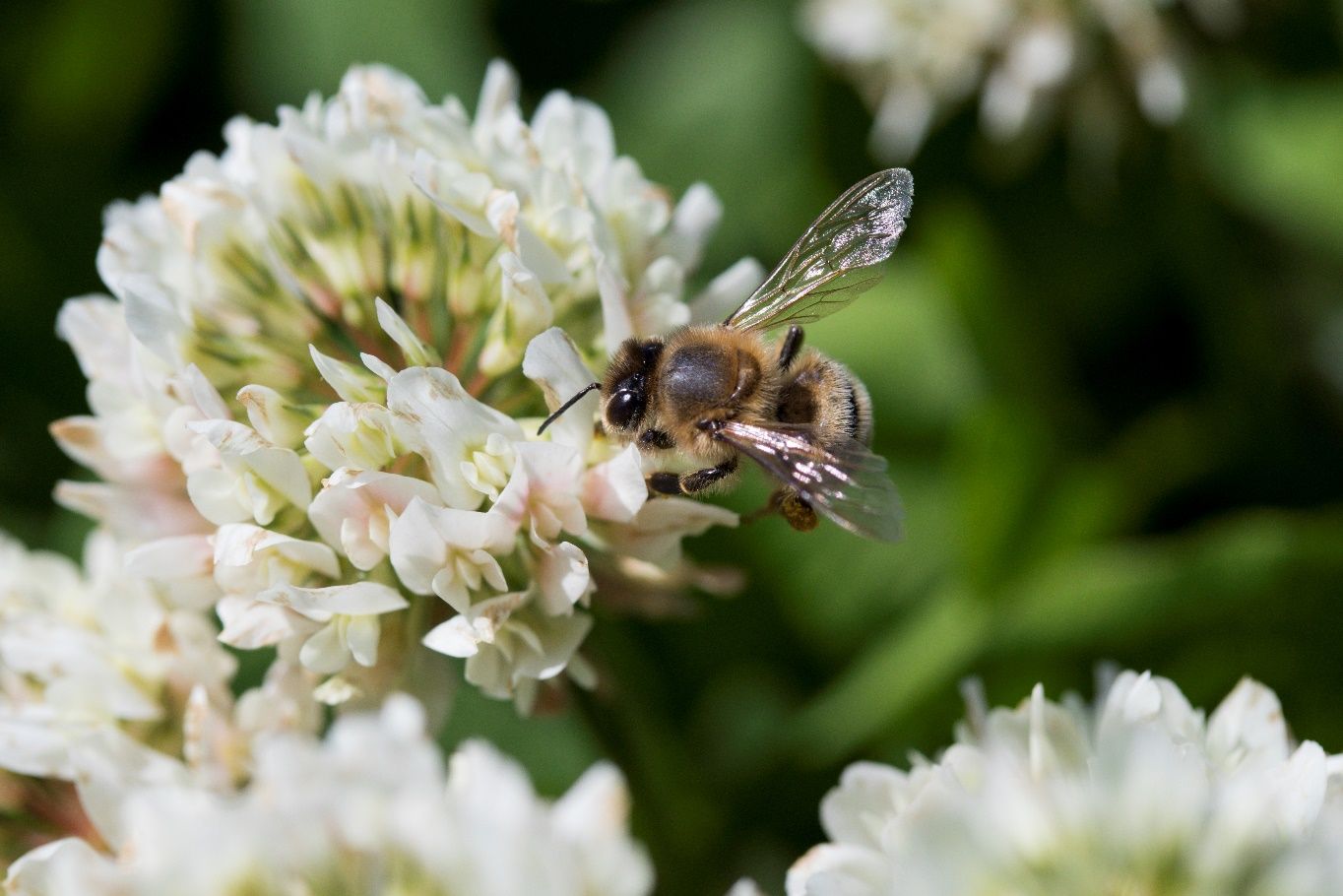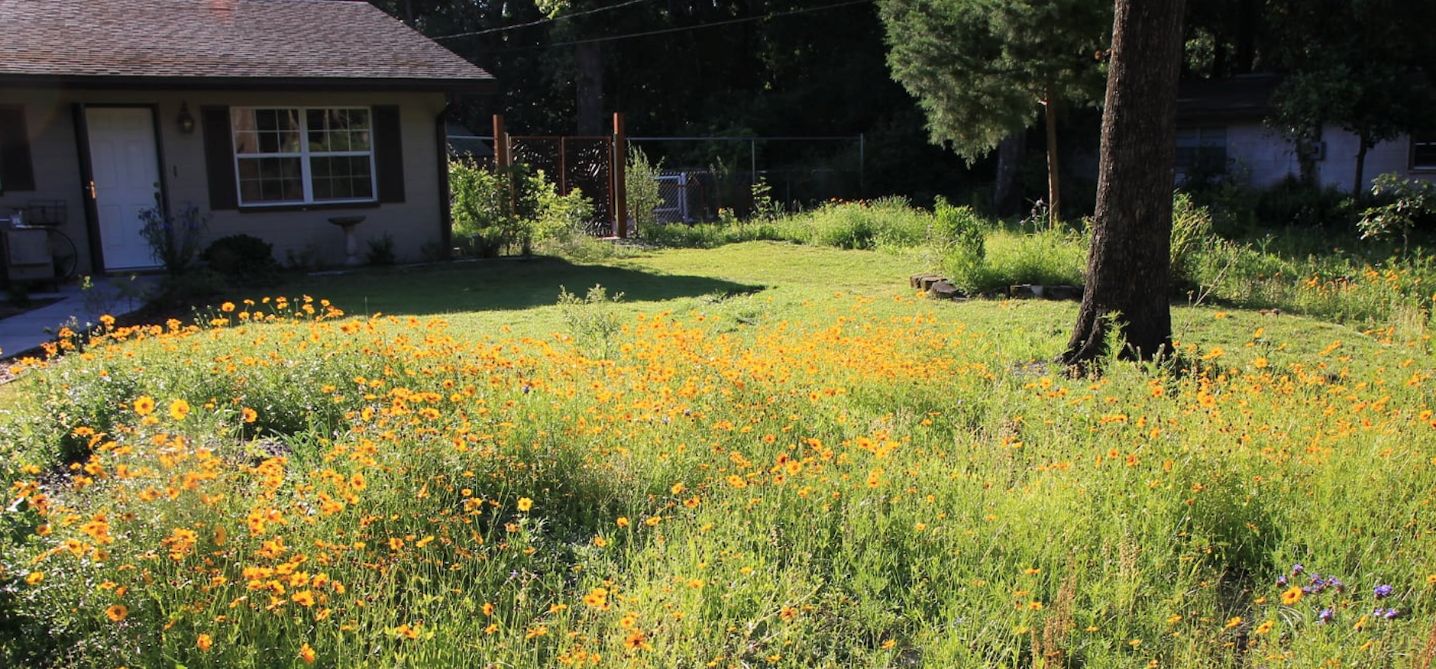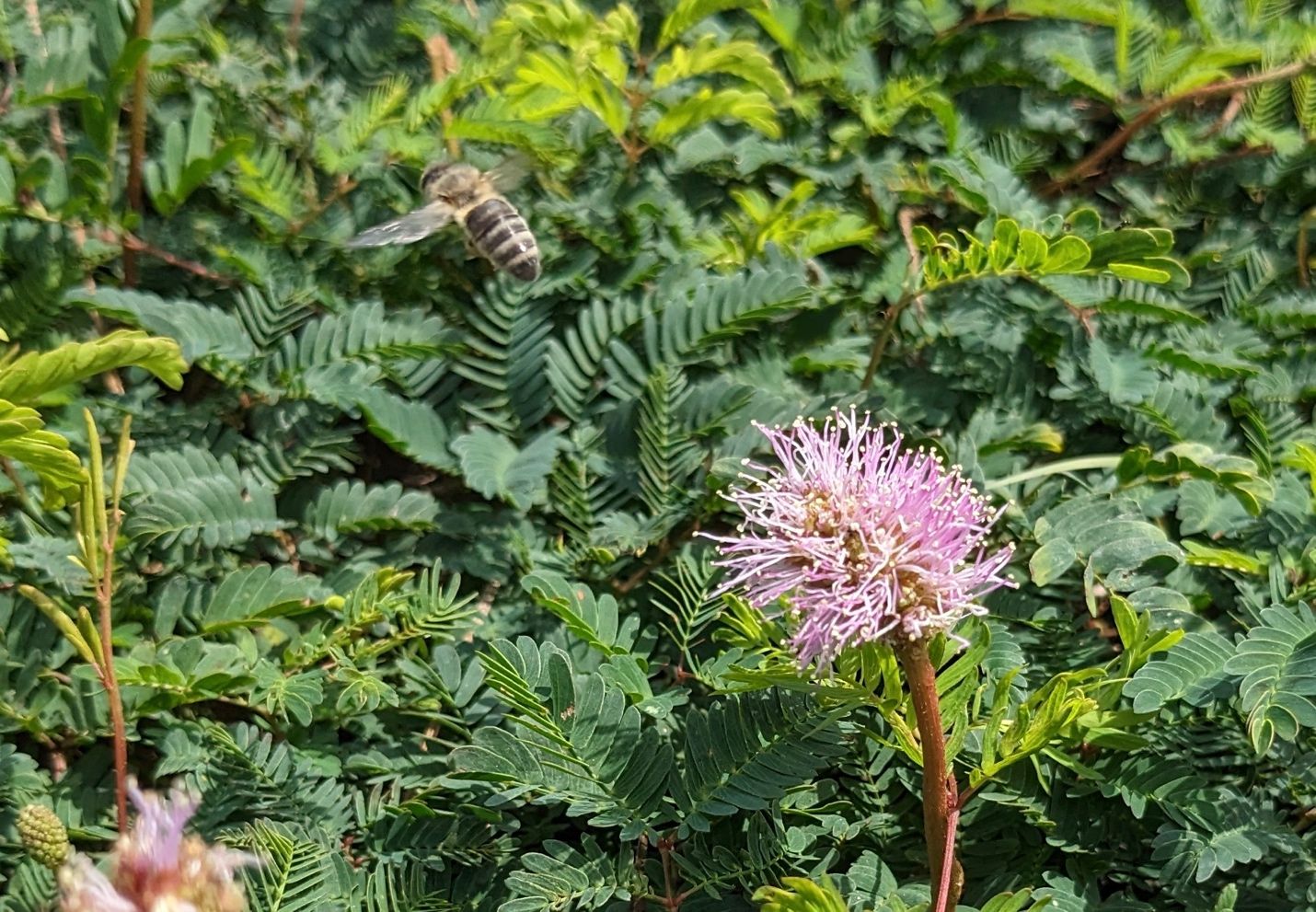Introduction
Protecting and supporting pollinators—especially bees—is critical to conserve environmental resources and ensure the health of humankind (Gill et al., 2016; Klein et al., 2018; Patel et al., 2020). Increasing urbanization and development of managed landscapes can harm pollinators by reducing flowers and vegetation and increasing exposure to chemicals (Baldock, 2020; Chaote et al., 2018). However, research shows that urban, developed landscapes can be designed and maintained to successfully provide habitats for diverse, healthy pollinator populations, including bees (Baldock, 2020; Fetridge et al., 2008; Theodorou et al., 2020). Thus, a major opportunity and need exist for residents, particularly those living in urban areas, to support bees and other pollinators by adopting pollinator gardening in their landscapes (Baldock, 2020; Burr et al., 2018). Based on recent research about significant barriers and solutions, this publication serves to guide Extension professionals and other practitioners to best encourage and facilitate adoption of pollinator gardening by addressing residents’ perceptions.

Credit: Tyler Jones, UF/IFAS
The Gap Between Pollinator Gardening Intent and Adoption
Evidence suggests that although residents would like to pursue pollinator gardening (Larson et al., 2022), actual engagement has not been accomplished on a wide scale (Warner et al., 2020). To help address this gap between intent and behavior adoption, we surveyed 1,598 Florida residents in 2022 about their perceptions, knowledge, and engagement in pollinator gardening. Practitioners may use these findings, described below, to target and reduce barriers that might discourage residents from planting their own pollinator gardens.
Targeting Key Perceptions to Encourage Adoption
The diffusion of innovations theory suggests that five perceived attributes—relative advantage, compatibility, complexity, observability, and trialability—are most influential to people’s decisions to adopt or reject a new practice or technology (Rogers, 2003). We used this theory to design our survey and isolate the attributes that Rogers proposed most strongly predict residents’ intent, engagement, and knowledge of pollinator gardening.
Reducing Complexity
Findings suggest practitioners should promote practices pollinator gardening can be easy and straightforward—those even a novice gardener can learn and adopt. Residents who felt pollinator gardening was complex reported having less knowledge about related practices such as identifying pollinators and pollinator-friendly plants, properly including native plants, and increasing floral diversity. This suggests building knowledge may be an avenue for residents’ adoption of pollinator gardening to tackle their concerns about it being too complex or challenging. To reduce perceived complexity, practitioners should:
- Demonstrate ways low input landscapes can support pollinators and ease outdoor maintenance and time demands.
- Simplify pollinator gardening by providing strategies for small-scale gardening (for example, plant combinations in a patio pot).
- Advise residents on where they can find trustworthy and simple information about pollinator gardening planning and maintenance.
- Showcase low-maintenance pollinator plants that can adapt to diverse conditions and fit different yard and community aesthetics.
Making the Practice Observable
It is important that pollinator gardening becomes more than an abstract idea for residents; in-person demonstrations and virtual simulations may help people see and feel its benefits. Observability was found to be the most important of the evaluated predictors of current engagement in pollinator gardening and intent to garden for pollinators. Related to this factor, trialability—the ability to test pollinator gardening before committing to engagement—also proved a significant predictor. Increasing observability and trialability can be paired in many cases; practitioners should:
- Create learning and demonstration gardens in neighborhood common spaces that include educational information to inspire and support residents to start the practices in their yards.
- Popularize pollinator gardening using real or virtual demonstrations in a variety of places such as botanical gardens, parks, breweries, and farmers’ markets to make the benefits apparent.
- Provide virtual opportunities for people to move closer to experiencing pollinator gardening and its outcomes such as virtual fieldtrips, garden tours, or pollinator webcams.
- Make pollinator-friendly trial plants or seeds available for people to test in their yards.
Helping Residents Find Their “Right Fit”
Compatibility (i.e., with people’s landscape maintenance routines, budgets, community, and neighborhood social norms/expectations) was almost as strong a predictor of intent and engagement as observability and should be central to education and outreach. Boosting compatibility can be integrated with other efforts such as increasing observability. To do this, practitioners should:
- Show ways pollinator gardens can be designed to fit different landscape aesthetics (Figure 2) and maintenance styles including more manicured yards or more naturalized, low-input yards.
- Work with homeowners’ association (HOA) residents and leaders to come up with ways to promote pollinator gardens as a beneficial landscape practice that agrees with community norms and aesthetics. (An Ask IFAS publication focusing on addressing barriers to pollinator gardening in HOAs is linked below under Supporting Resources.)
- Offer different types of templates and garden design examples paired with demonstrations and promotional activities.
- Illustrate the savings from transitioning areas of the yard to pollinator gardens and how costs may fit within gardeners’ budgets.
- Appeal to residents’ environmental values and concern for wildlife conservation by describing the benefits of pollinator gardening.

Credit: Gage Lapierre, UF/IFAS
Supporting Resources
The research described in this publication provides new insights to inform education and outreach efforts and can be paired with other resources available for practitioners to learn more about pollinator gardening and direct resident clients to reliable, easy to use information.
- Ask IFAS has a growing list of documents created for Extension and other practitioners on Landscaping for Florida Wildlife, including articles on butterfly, hummingbird, and bee gardening. EDIS publications also discuss selecting plants for bees and butterfly gardening in Florida.
- The authors of this publication wrote another Ask IFAS publication focusing on overcoming the barriers identified to adoption of pollinator gardening in HOAs. That publication (https://doi.org/10.32473/edis-WC430-2023) was intended for Extension professionals and practitioners who work with residents on landscaping and landscaping-related topics, as well as HOA members and leaders who influence and/or manage yards and green space.
- Florida Friendly Landscaping Program created two apps to aid Florida residents in designing butterfly gardens and bee gardens which include recommendations for plants based on growing region and other site characteristics. They also have numerous recorded webinars specialized for homeowners with relevant topics like “gardening for bees.”
- Putnam County with Cornell Cooperative Extension provides an example of a virtual and interactive pollinator garden tour. The Florida Native Plant Society has a virtual garden tour video on their website; their Model Landscape Ordinance Handbook focuses on landscaping with native plants but also includes useful advice related to pollinator gardening.
- Creative partnerships with local businesses and organizations can be an avenue to popularize pollinator gardening and spread awareness of conservation of pollinators. First Magnitude Brewing Company partnered with the Florida Museum to brand “butterfly beers” with endangered species and host themed events. Partnerships like this, if instead focused on bees and pollinator gardening, could boost observability and encourage action.
- The Florida Wildflower Foundation offers excellent resources including their guidance on how to create a pollinator pot—an activity that may decrease perceived complexity while creating opportunities to try out pollinator gardening on a small scale.

Credit: Laura Warner, UF/IFAS
Conclusion
Residents seem inclined to engage in pollinator gardening, but key perceptions must first be addressed to encourage more widespread adoption. The best practices for education and outreach concentrate on reducing the perception that pollinator gardening is complex by building residents’ basic knowledge; making the practice more observable (e.g., using demonstration gardens and virtual experiences); and promoting options for varying budgets, time commitments, and communities. Increasing the number of residents with pollinator gardens would help protect the ecosystem of which humans are an integral part (Baldock, 2020; Burr et al., 2018; Patel et al., 2020). More information about the research described in this article is available in the full study (Silvert et al., 2023).
Acknowledgements
This work was supported by USDA National Institute of Food and Agriculture’s (NIFA’s) Fiscal Year 2020, Program A1113, Pollinator Health: Research and Application under accession number 1024852.
References
Baldock, K. C. (2020). Opportunities and threats for pollinator conservation in global towns and cities. Current Opinion in Insect Science, 38, 63–71. https://doi.org/10.1016/j.cois.2020.01.006
Burr, A., Hall, D. M., & Schaeg, N. (2018). The perfect lawn: exploring neighborhood socio-cultural drivers for insect pollinator habitat. Urban Ecosystems, 21(6), 1123–1137. https://doi.org/10.1007/s11252-018-0798-y
Choate, B. A., Hickman, P. L., & Moretti, E. A. (2018). Wild bee species abundance and richness across an urban–rural gradient. Journal of Insect Conservation, 22, 391–403. https://doi.org/10.1007/s10841-018-0068-6
Fetridge, E. D., Ascher, J. S., & Langellotto, G. A. (2008). The bee fauna of residential gardens in a suburb of New York City (Hymenoptera: Apoidea). Annals of the Entomological Society of America, 101(6), 1067–1077. https://doi.org/10.1603/0013-8746-101.6.1067https://doi.org/10.1603/0013-8746-101.6.1067
Gill, R. J., Baldock, K. C., Brown, M. J., Cresswell, J. E., Dicks, L. V., Fountain, M. T. … Potts, S. G. (2016). Protecting an ecosystem service: approaches to understanding and mitigating threats to wild insect pollinators. Advances in Ecological Research, 54, 135–206. https://doi.org/10.1016/bs.aecr.2015.10.007
Klein, A. M., Boreux, V., Fornoff, F., Mupepele, A. C., & Pufal G. (2018). Relevance of wild and managed bees for human well-being. Current Opinion in Insect Science, 26, 82–88. https://doi.org/10.1016/j.cois.2018.02.011
Larson, K. L., Lerman, S. B., Nelson, K. C., Narango, D. L., Wheeler, M. M., Groffman, P. M., … Grove, J. M. (2022). Examining the potential to expand wildlife-supporting residential yards and gardens. Landscape and Urban Planning, 222. https://doi.org/10.1016/j.landurbplan.2022.104396
Patel, V., Pauli, N., Biggs, E., Barbour, L., & Boruff, B. (2021). Why bees are critical for achieving sustainable development. Ambio, 50(1), 49–59. https://doi.org/10.1007/s13280-020-01333-9
Rogers, E. M. (2003). Diffusion of innovations (5th ed.). New York: Free Press.
Silvert, C. J., Gusto, C., Warner, L. A., Diaz, J. M., & Mallinger, R. E. (2022). How can residents protect and promote pollinators? Factors influencing residential pollinator gardening [Manuscript submitted for review]. Urban Ecosystems.
Theodorou, P., Herbst, S. C., Kahnt, B., Landaverde-González, P., Baltz, L. M., Osterman, J., & Paxton, R. J. (2020). Urban fragmentation leads to lower floral diversity, with knock-on impacts on bee biodiversity. Scientific Reports, 10(1), 1–11. https://doi.org/10.1038/s41598-020-78736-x
Warner L. A., Momol, E., Lewis, C., Wichman, T., Wilber, W., & Reisinger, A. J. (2020). Floridians’ engagement in landscape best practices to protect water resources: Information from a 2018 survey. Ask IFAS: University of Florida Cooperative Extension Electronic Data Information Source (AEC682). https://doi.org/10.32473/edis-wc345-2020